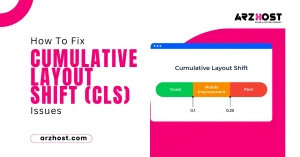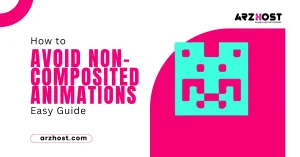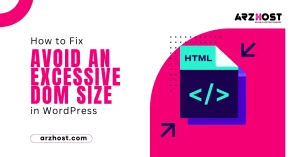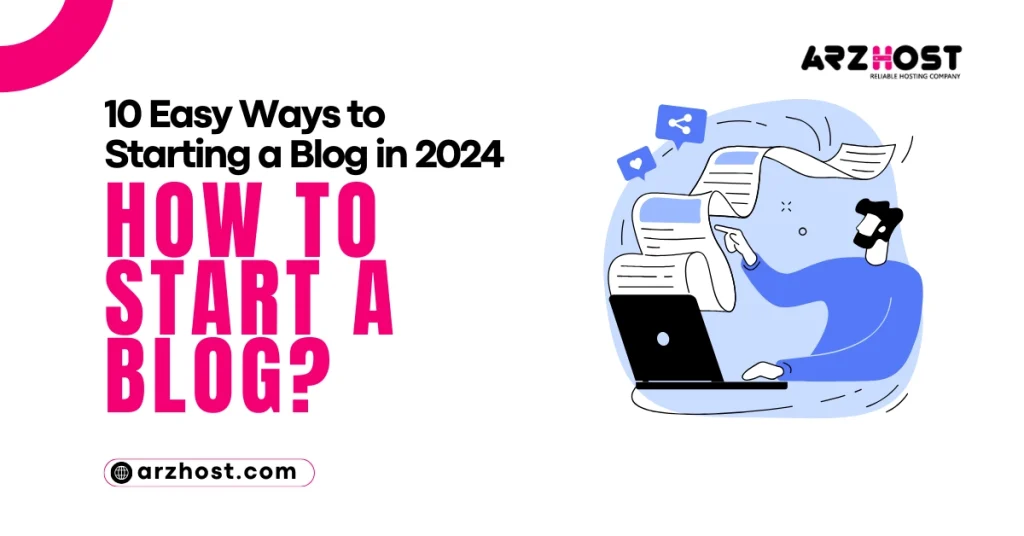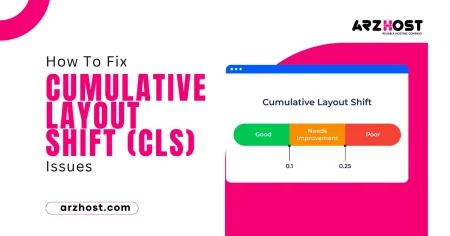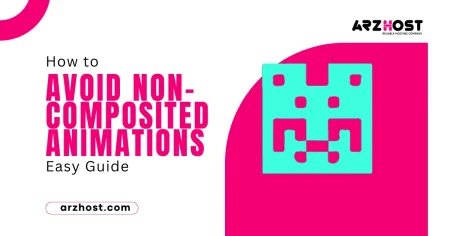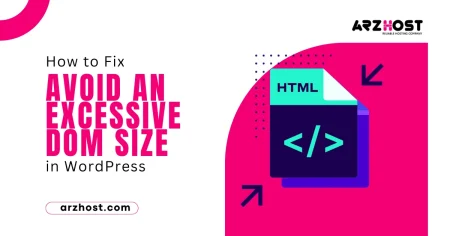Creating a blog is a great approach to establishing your brand’s credibility. If you’re a potential writer or have a pastime you want to record and share with others, a blog is also a fantastic way for you to express yourself.
Before you launch a blog, you need be aware of a few tactics, though. For this reason, we’ve put together this thorough, step-by-step tutorial to help new bloggers get started. How to Start a Blog?
If you’ve ever read a blog post, you’ve probably read anything written by a thought leader who is a recognized authority in their field.
If the blog post was well-written, you probably left with some useful information and a favorable impression of the author or company that created it.
Blogging is a great way for anyone to engage with their audience and reap the many benefits it offers, such as free search engine traffic, social network promotion, and exposure to a newly discovered audience.
AT ARZ Host, we’ll cover everything, including choosing a blogging niche, setting up a platform, content publication, and blog promotion.
Let us begin with an essential inquiry.
Depending on your niche, blogging can mean different things, therefore let’s start with this explanation.
A blog is a digital platform that allows individuals or organizations to publish and share informational or conversational content on the internet. The term “blog” is a shortened form of “weblog,” indicating its origin as an online log or diary.
Blogs can cover a wide range of topics, including but not limited to personal experiences, hobbies, travel, lifestyle, technology, fashion, and more.
What is Blog?
Typically, a blog consists of a series of entries, known as posts, displayed in reverse chronological order, with the most recent post appearing at the top. These posts are often written in an informal and conversational style, making them accessible to a broad audience.
Bloggers, those who create and maintain blogs, use the platform to express their opinions, share insights, provide information, or engage with their readers.
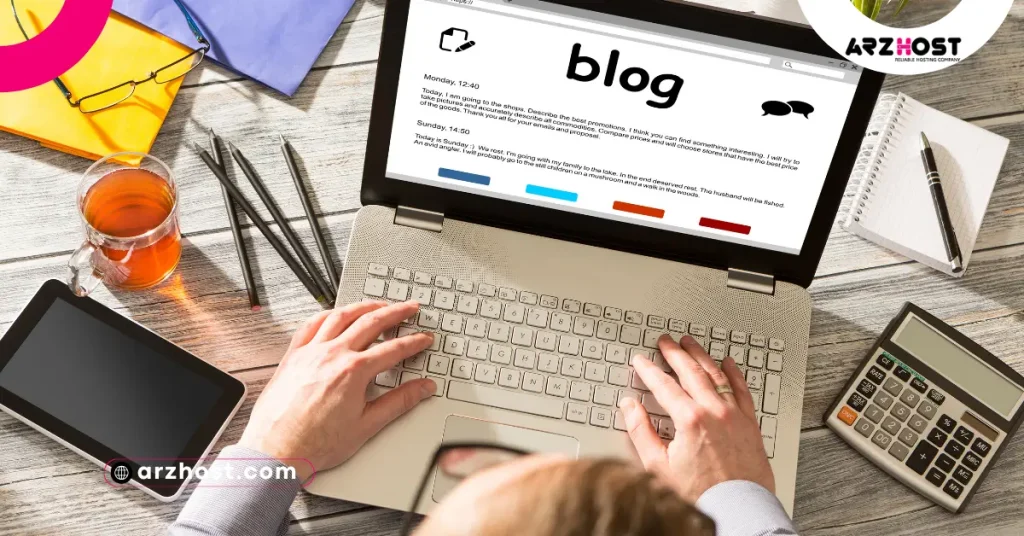
One of the defining features of a blog is its interactive nature. Most blogs include a comment section, allowing readers to provide feedback, ask questions, or engage in discussions with the blogger and other readers. This fosters a sense of community and encourages a two-way communication channel between the content creator and their audience.
Blogs are versatile tools that have evolved over time. While some individuals use blogs as personal diaries or creative outlets, businesses and professionals also leverage blogs to establish an online presence, share expertise, and connect with their target audience.
The rise of blogging platforms and content management systems has made it easier for individuals with varying levels of technical expertise to create and manage their blogs, contributing to the diversity and richness of content available on the internet.
Here are some of the key characteristics of blogs:
- Informal: Blogs are typically written in a more informal and conversational style than traditional websites. This makes them more accessible to readers and creates a sense of community.
- Regularly updated: Blogs are typically updated frequently, with new posts added on a daily, weekly, or monthly basis. This keeps readers engaged and coming back for more.
- Interactive: Many blogs allow readers to leave comments and interact with the blogger or other readers. This creates a sense of community and allows for discussion and debate.
- Wide range of topics: Blogs can cover any topic imaginable, from personal experiences and opinions to news and commentary. This makes them a valuable resource for information on a wide range of subjects.
Here are some of the benefits of reading blogs:
- Stay up-to-date on current events and trends: Blogs can be a great way to stay up-to-date on the latest news and trends in your area of interest.
- Learn new things: Blogs can be a valuable source of information on a variety of topics. You can learn new skills, get new ideas, and expand your knowledge base.
- Connect with others who share your interests: Blogs can help you connect with other people who share your interests. You can leave comments, participate in discussions, and build relationships with like-minded people.
- Be entertained: Blogs can be a great source of entertainment. There are blogs on a wide variety of topics, so you can find something that interests you and provides a good laugh or escape from reality.
Overall, blogs are a valuable resource for anyone who wants to stay informed, learn new things, connect with others, or simply be entertained.
How to Start a Blog? 10 Easy Steps to Starting a Blog
We’ll go over each stage in the process of creating a blog for beginners and provide further information in the parts that follow.
1: Pick Your Blog Niche & Name
A blog’s niche, or the particular subject it will cover, is essential to identifying who your intended readership is. Choosing the ideal blog name and creating a targeted blogging strategy are two more benefits of having a strong blog specialty.
A few blog niches are food, travel, gaming, books, and photography.
It could be attractive to cover a wide range of blog ideas or themes while starting a new blog. But attempting to be an expert in too many areas is challenging and frequently unsustainable.
Even though you might publish a few excellent, well-received blog entries, it will be difficult to keep up a consistent reading because of your dispersed audience.
For this reason, it’s important to stay in a niche that has the potential to draw a committed following. A committed readership will eagerly anticipate your upcoming post, providing a consistent flow of traffic to your blog.
The following advice can help you choose the ideal niche for your blog so that it succeeds:
- It will always be more satisfying to write about a subject you are passionate about than to force yourself to write about something you don’t.
- Think about the things you enjoy doing, and the subjects you’d like to learn more about. Make them more precise after that. Try concentrating on a certain cuisine, such as Japanese, Mexican, or Italian, if food is your love.
- Likewise, if you’re interested in starting a book blog, think about writing about affordable books to read or about particular kinds of literature.
To guarantee you’ll have an audience to target, your major issue should have some amount of pre-existing interest. To find out how many people are searching for particular keywords in your niche and whether or not there are enough people talking about it on social media and in community forums, use Google Trends.
You’ll be able to determine which blog post ideas have greater interaction potential and what trends are in your niche in this method.
Although it’s not necessary, being a topical specialist lends you a certain authority that many readers seek. Possessing a unique perspective on your area of expertise and a strong desire to learn more is essential.
For example, even if you’re not a professional photographer, you can still launch a blog for photographers who are beginners. Feature expert interviews on your blog to boost credibility.
2: Select the Right Blogging Site
After you’ve chosen a specialty, it’s time to get your blog’s website ready. There are two types of blogging platforms: self-hosted and hosted.
Website builders and other hosted platforms are all-inclusive. Usually, they include every tool required to create a blog. Furthermore, buying hosting and a blog domain name from a third party is not necessary.
Conversely, self-hosted platforms demand the purchase of hosting solutions independently. Usually, these platforms are content management systems (CMSs) that provide your blogging website with a wide range of customization choices.
To help us better comprehend these alternatives, let’s look at a few examples.
CMSs are among the most used tools for creating websites. They provide a graphical user interface that makes it simple to develop and maintain a website. Because of their adaptability, content management systems (CMSs) are good blogging platforms for people who want complete control over their blogs, including the ability to choose blog hosting companies and put security measures in place.
Of all the content management systems (CMSs) available, WordPress is the most widely used and powers nearly half of all websites. Because of its widespread use, users can improve their blog pages with a wide variety of both free and premium WordPress themes and plugins.
Additionally, there is a sizable and active community for this CMS where members exchange helpful insights and platform-related knowledge. Therefore, if you wish to build a blog using a CMS, we advise utilizing WordPress.
If you want to launch a self-hosted WordPress blog, you must first understand what web hosting is. To do this, you must choose a hosting provider. To reduce technological complexity and concentrate more on content creation, think about managed WordPress hosting.
3: Choose a Name for Your Blog and Obtain the Domain
Coming up with a creative name is the next stage in learning how to become a blogger. It should be relevant to your sector and brandable in addition to being snappy and unique.
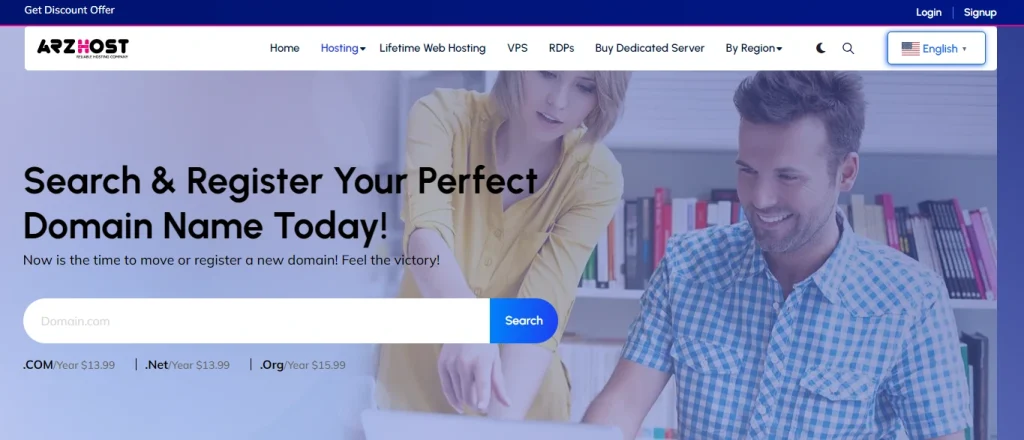
Three characteristics are essential for a decent blog name, and they are as follows:
- Connected to Your Specialty. Readers should be able to infer your niche from the blog title, ideally. Think about utilizing pertinent keywords for this.
- No more than two or three words. The ideal practice is to keep blog names brief, even though some very popular blogs have long names.
- Simple to Memorize and Spell. Don’t use special characters or digits in the blog name for best brandability.
Fortunately, there are a number of blog name generators available to help you get started with brainstorming.
Simply input a few keywords into the generator, and the AI will generate various blog titles for you. All you have to do is select your favorite, or mix and match a few options, and your new blog name will be ready.
Obtaining a domain name for your blog is the next step in starting one. Visitors must input this web URL in order to view your website.
Ideally, the domain name you choose should match the precise title of your site. If that isn’t available, look for something similar or comparable instead. This will help your website stand out from the crowd and prevent confusion.
A domain name is available for purchase from a recognized registrar. A few Types of web hosts also function as domain registrars, such as ARZ Host. Using this method, you can save time and money by purchasing a domain and hosting together.
4: Configure and Personalize Your Website
As was already mentioned, different platforms are appropriate for various requirements and tastes. Additionally, their setup and customizing procedures differ.
We’ll walk you through the process of configuring and personalizing a WordPress blogging platform in this part.
Three essential phases in starting a new blog will be covered: setting up the content management system, modifying the theme, and installing plugins.
The first thing you should do after buying your web hosting package is install WordPress using the control panel auto-installer that your web host has provided.
Here’s how to use ARZ Host’s cPanel for it:
1: Log in to the dashboard of your hosting account and select Website → Auto Installer.
2: Click Select under WordPress.
3: There will be a pop-up window. Enter the following information in the form:
- Verify the accuracy of your domain name.
- Enter the email address, password, and administrator username. You can access your WordPress dashboard or admin area with this login details.
- Put the name of your blog here, along with the title of your website. You can modify this at a later time through your WordPress admin dashboard’s Site Identity settings.
- Select the language of your choice.
- Choose To obtain the most recent security patches and features, always update to the most recent version that is available.
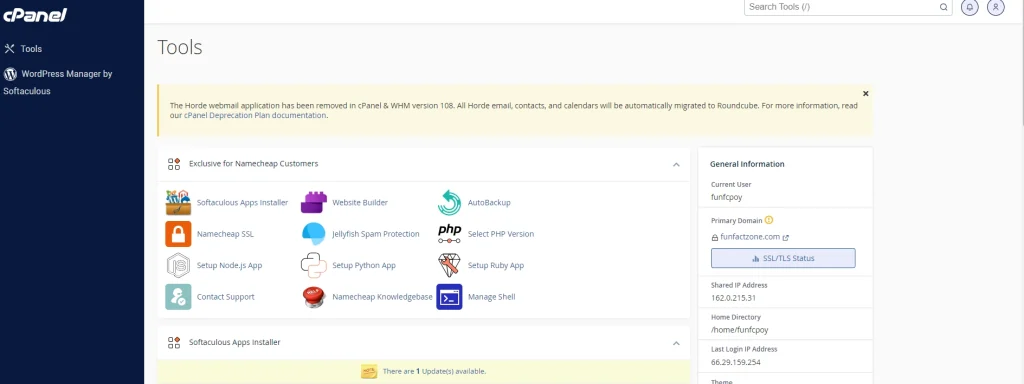
4: Select Install.
- Enter the WordPress admin area after the installation is finished. This is where you may start modifying your brand-new blog.
You may anticipate receiving priority support, frequent updates, and premium plugins included with your purchase when you purchase a paid WordPress theme. Although free themes can be a good place to start, they typically offer little to no support, thus paying for premium themes is well worth it.
Take into account these important considerations when searching for the ideal WordPress theme for your blog:
- Costing: Make sure a premium blog theme is worth the cost if you’re thinking about getting one. Think about contrasting it with different themes at comparable prices.
- Create: Your blog’s content should align with the theme’s look. When in doubt, give preference to straightforward, user-friendly designs that showcase each blog’s content.
- Characteristics: Verify whether the theme has features like customer support, predefined layouts, and a drag-and-drop builder.
- Adaptability: Make use of a responsive theme, which can adjust to any size screen. Given that mobile devices account for more than half of all website traffic, this is crucial.
- Reviews from users: Verify whether other individuals have had good luck with a theme before investing in one.
Navigate to Appearance →Themes →Add New on your dashboard after logging in to install a theme from the WordPress directory. Click Install after hovering over the blog theme of your choice. After the procedure is finished, press Activate.
Choose Upload Themes, upload the theme’s file, install, and activate the theme to install it from a third-party source.
The ARZ Host Blog Theme is free to install for customers of ARZ Host who sign up for Business Web Hosting or any of our Dedicated Hosting plans. Users who select WordPress as their platform during the website setup procedure can access it.
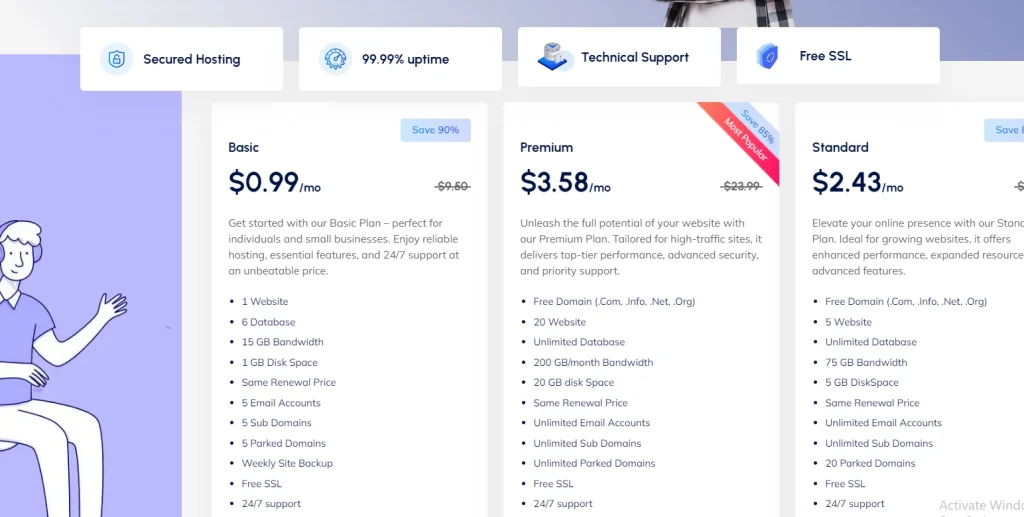
5: Make the Required Pages and Groups
The content of a website is contained in its pages. A typical web page needs little to no updates or revisions, in contrast to posts. The following are the most typical categories of pages found on blogs:
- Homepage: Your blog’s introduction can be found on your homepage. When users type your domain name into the address bar of their browser, this is what they will see. You should feature excerpts from your most recent and finest blog posts on the site.
- The Page about: This is the area of your website where readers can find out more about the individual or group that runs the blog. The page might have a bio, the site’s goals, and pertinent photos.
- Contact us, Page: Contact information for the website owner is provided on this blog page. An email address, phone number, social network profile links, contact form, and address with a Google Maps location are typically included on a contact page.
Certain page types may be required for different sorts of blogs. You might need to add product pages to the website, for example, if your blog has an online store.
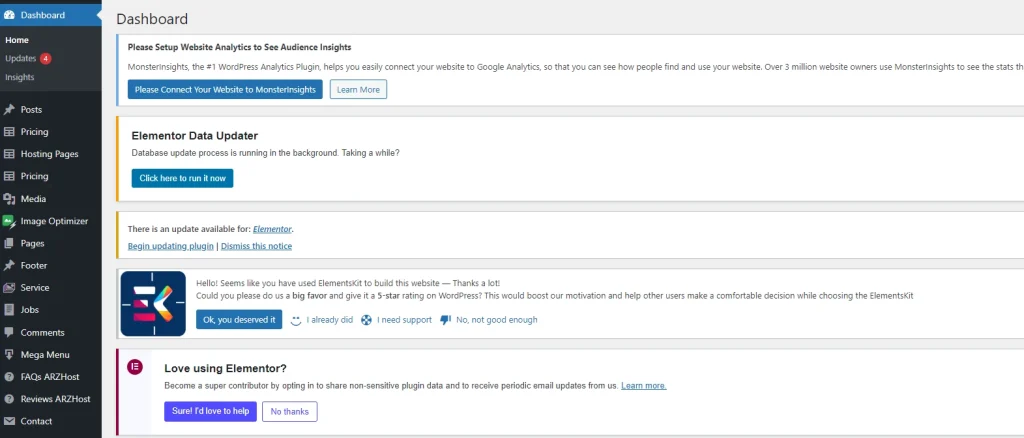
Open the WordPress dashboard and select Pages → Add New to start creating a page. The Gutenberg editor will be displayed to you. Utilize it for writing and formatting the page copy as well as adding any necessary forms, videos, photos, or other page features.
Recall that a page and a post are not the same in WordPress. Pages usually show up in your navigation menu, whereas posts are used for individual blog postings.
The article categories on your site is another essential aspect. This facilitates the grouping of particular blog content, improving their organization and accessibility.
Using the WordPress dashboard, navigate to Post → Categories to add or modify categories. Alternatively, you can add them directly in the Gutenberg editor while you’re writing.
6: Formulate a Content Strategy and Get Ready to Launch
It is imperative to attend to the pre-launch campaign prior to beginning your blogging career. Use these suggestions to create an effective content strategy:
Clarify Your Objectives: Establishing objectives for your project facilitates tracking your progress and identifying areas for improvement. Establishing specific goals, such “have 1,000 newsletter subscribers by the end of the year,” is the best course of action. Setting specific goals helps you measure and monitor your progress more easily.
Define Your Goal Audience: Learn about the shared requirements, goals, problems, and interests of the people in your target market. Examining online forums where your intended audience is probably to congregate is a smart idea. Determine their preferred content type and the topic of interest.
Examine Your Opponents: Find out who the primary rivals are in the niche of your blog. Examine and evaluate their most well-liked articles to see what works for them. Then, identify any places where your site might excel or present a different angle.
Keep an eye out for subjects that they don’t go into enough detail on and concentrate on adding those details to your own blog entries. Your blog will stand out from the others thanks to this.
- Specify the Subjects You Want to Write About: Come up with ideas for blog posts and take into account all the data you have discovered about your target market and rivals. Look for sample blog posts and make a content inventory sheet with every possible subject you could write about. In this manner, you’ll be better organized and ready with ideas for upcoming blog entries.
- Perform Research on Keywords: Assess the degree of competitiveness and interest in each issue that you have selected. Every keyword must have been chosen for a compelling, data-driven purpose. Understanding what people are searching for and what kind of material is already out there is made easier with the help of tools like Ahrefs and Google Trends.
Plan Out Your Upcoming Blog Posts: Consistency is the key to developing a devoted readership. Maintaining a regular publishing schedule is preferable to posting a lot of content at once and then going silent for a long time.
7: Compose Your First Blog Entry
Now that you know how the pre-launch procedure works, it’s time to consider creating your very first blog post. The following advice can help each new post be meaningful:
- Be succinct and clear: Keep phrases and paragraphs brief and use language that is easy to understand. Steer clear of lengthy paragraphs that could scare off readers.
- Make use of lists, headings, and subheadings: When reading a blog post quickly, structured style makes it easier for readers to discover the information they need.
- Include graphics and pictures: Posts with visual content are more interesting to read. They are frequently required, particularly when creating a how-to manual or trying to present information in a more readable manner.
- Make Sure It’s Original: To find out whether any of your writing has been plagiarized, use a plagiarism detector. This tool helps you ensure that your writing is original by highlighting and identifying any instances of repetition. If you are using an AI writing tool for your material, this is very crucial.
- Use optimal practices for SEO: To include search engine optimization into your writing and publishing process, use tools such as Yoast SEO. You may significantly increase your blog’s search engine visibility by producing SEO-friendly material.
Go to Posts → Add New in your WordPress dashboard after logging in to write your first blog article. The WordPress text editor, which is where you write and format your content, will open.
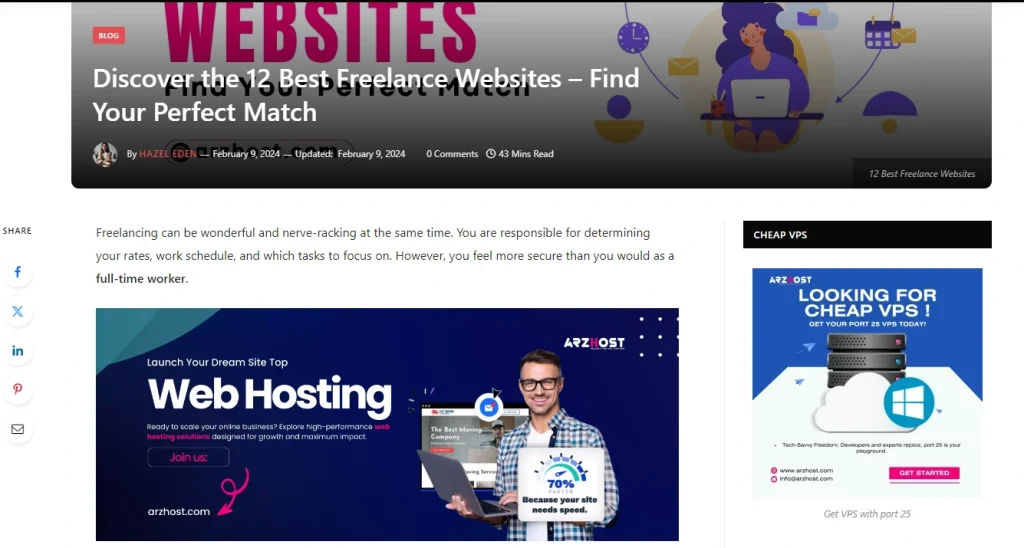
You can add and modify blocks or sections for various kinds of content using the WordPress editor. These blocks can include text, media, widgets, scripts, and blog design elements. You only need to click the editor’s + button to choose and add a new block.
Look through the options under the Patterns page to see if you want to use a pre-made template in your new blog post.
Make sure all the settings are accurate before posting your first blog post when you’ve finished writing, formatting, and adding material. Click the Settings button located in the upper right corner of the editor to view the post’s advanced options.
You can select whether to enable comments, add tags, establish the categories for the post, and submit featured photos from the settings sidebar.
To ensure everything is in order, click Preview before publishing the blog post. Verify, for instance, that all text and photographs appear as intended and that the blog post title isn’t too lengthy. Edit the post again if necessary.
When you’re happy, click Publish to continue.
8: Publish Your Blog
As we previously stated, creating a blog article is usually a rather easy process. To make sure the blog article is at its finest, we advise performing one last review.
Consider looking over this publishing checklist before publishing your blog post:
- Examine and correct any spelling and grammar mistakes: Spelling and punctuation mistakes can undermine your credibility and make your material appear less trustworthy. As a result, before posting, give your blog article a thorough editing. To make sure you are seeing the piece objectively, one tip is to give yourself a day between writing and editing. If at all feasible, it’s a good idea to have someone else proofread the blog.
- Verify the Structure and Formatting: The organization and format of your blog might aid in keeping readers interested. Including a table of contents, making sure the writing flows from one section to the next, and using understandable font sizes and styles are a few best practices.
- Include and Modify Visual Components: Graphics such as graphs and pictures facilitate the more efficient delivery of information. As a result, placing them appropriately can enhance your material. For a quicker loading time, think about downsizing or compressing the photos if you use a content management system like WordPress.
- Verify That Every Link Is Operating Correctly: Links, both internal and external, are crucial to the search engine optimization of your blog and aid users in navigating your site. Verify that every link you provide points to the appropriate page. The anchor text you choose is also vital to take into account because it aids Google and other search engines in better understanding the context of the links.
You can publish your first blog post and begin promoting it to a larger audience once you have finished the checklist and made sure all the necessary components are in place.
9: Expand and Market Your Blog’s Readership
Now that your freshly launched WordPress blog is operational, it’s time to attract readers. If your content isn’t seen by the intended audience, it doesn’t matter how good it is. Thus, blog advertising is essential.
Improve Your Blog Using SEO Techniques: A collection of methods used to raise a website’s position in search engines is referred to as search engine optimization.
Since 53% of all internet traffic originates from organic searches, a website’s positioning on search engine results pages (SERPs) is crucial. High Google ranking pages and posts increase the likelihood that your site will receive consistent organic traffic without the need to pay for ads.
The following are some of the top blog SEO tips:
- Research on keywords: Choose low-competition, niche long-tail keywords to increase your chances of ranking well on search engine results pages. To obtain keyword-related data, use resources such as Ahrefs, SEMrush, and Google Trends.
- Become a Google Search Console user: It’s a great tool for monitoring how well Google ranks your website. It will inform you of the most popular keywords and the websites that link to yours.
- Put in place an SEO plugin: Yoast SEO is one of the most widely used plugins for WordPress blogs. Most website builders offer comparable integrated SEO tools if you use them.
- Use the greatest on-page SEO techniques: Changing the URL slug and adding meta descriptions are two crucial on-page SEO strategies.
- Boost the functionality of your website: Improved page loading speed is good for SEO. To speed up your website, make sure you adhere to website performance requirements.
Finding and connecting with your audience can be greatly facilitated by promoting your blog on social media and in online forums. Locating communities related to your blogging specialty and directing them to your site ought to be the aim.
90% percent of bloggers share their content on social media. It’s a well-liked way to drive visitors, so investing some effort in a social media strategy that works is essential.
Making ensuring social media is incorporated into your own blog is the first step. If readers find your content relevant or engaging, they might want to follow you on social media and tell others about your site.
If you manage a WordPress blog, think about utilizing a social networking plugin. You can use features like Facebook like buttons, social sharing, and social networking symbol widgets by installing them.
Choosing the social media channels to advertise your blog on is the next stage.
Not every social media platform will work for your particular niche because they all have different qualities. Thus, it’s crucial to study the demographics of each platform before promoting on social media.
10: Make Money from Your Blog
There will be opportunities to earn money from your blog after it has a sizable following. There are numerous approaches to making money from your blog. Among the most popular techniques are:
- Partner Promotion: You may use affiliate links to earn money from your blog by signing up as a brand affiliate. For instance, you can get paid a commission of between 5 and 30 percent of the product price each time a blog reader makes a purchase using the affiliate link. The program and the products available determine the actual rates.
- Sponsored Advertising: Bloggers who register with an ad network can display advertisements on their websites. Bloggers may instantly connect with brands that are appropriate to their audience with the aid of ad networks like Google AdSense. However, to preserve a pleasant reading experience, make sure your ad slots aren’t blocking the blog post.
- Advertised Content: Getting in touch with companies and writing about their products is another option to earn money from blogging. Make sure your blog has a considerable quantity of traffic and visitors before doing this. More advertisers will approach seasoned bloggers, giving them greater power of negotiation over the amount of money they can make from a single post.
- Both physical and digital goods: Integrate e-commerce features into your blog to sell tangible and digital goods associated with your writing. For example, you can market digital goods like eBooks and online courses that build on the concepts you’ve covered in previous blog entries. Selling tangible goods is something else to think about.
- Subscriber Subscriptions: Make unique content that viewers can only access by purchasing a membership. Make sure to consistently provide unique, excellent material to preserve the value of the subscription.
To add paywall functionality to their websites, WordPress users can install membership plugins such as Member Press or Paid Member Subscriptions.
Is Starting a Blog Worth It?
Starting a blog can be a highly rewarding endeavor for a variety of reasons. First and foremost, it provides a platform for self-expression and creativity.
Whether you have a passion for a specific subject, a talent you want to showcase, or simply enjoy sharing your thoughts and experiences, a blog offers a space to articulate and refine your voice.

From a professional standpoint, a blog can enhance your online presence and personal brand. It serves as a dynamic portfolio that showcases your skills, knowledge, and interests.
This can be particularly advantageous for freelancers, entrepreneurs, or job seekers looking to differentiate themselves in a competitive market. Employers and clients often appreciate candidates who demonstrate a proactive approach to learning and sharing industry insights.
Starting a blog can be worth it for several reasons, but its value depends on your goals, interests, and commitment. Here are some factors to consider:
- Personal Expression: A blog provides a platform for you to express yourself, share your thoughts, and showcase your expertise or passions. If you enjoy writing and want an outlet for creativity, a blog can be very fulfilling.
- Skill Development: Blogging can help you improve various skills such as writing, research, and content creation. It can also enhance your digital marketing, social media, and SEO skills if you decide to promote your blog.
- Networking: Blogging allows you to connect with like-minded individuals, both readers and fellow bloggers. This networking can lead to valuable opportunities, collaborations, and friendships.
- Professional Development: If your blog is related to your professional field, it can serve as an online portfolio, showcasing your expertise and attracting potential employers or clients.
- Monetization: While not guaranteed, some bloggers find success in monetizing their blogs through ads, sponsored content, affiliate marketing, or selling products/services. However, this usually takes time and effort to build a substantial audience.
- SEO Benefits: Regularly updating your blog with quality content can improve your website’s search engine ranking, making it more visible to a wider audience.
- Therapeutic Outlet: Writing can be a therapeutic process. Blogging about personal experiences, challenges, or achievements can help you reflect and gain insights, while also providing support to others who may be going through similar situations.
However, it’s essential to note that blogging requires dedication and consistency. Success may not come overnight, and building an audience takes time. Before, how to starting a blog, consider your commitment level, niche selection, and long-term goals.
If you enjoy the process of creating content and are patient with the potential gradual growth, starting a blog can be a rewarding endeavor.
How Much Does It Cost to Start a Blog?
The cost of starting a blog can vary depending on several factors, such as your hosting choice, domain name, design preferences, and any additional tools or features you may want. Here’s a breakdown of potential costs:
1: Domain Name:
- Cost: Typically, around $10 to $20 per year.
- You can register a domain through domain registrars like GoDaddy, Namecheap, or Google Domains.
2: Web Hosting:
- Cost: Varies widely, but shared hosting can start at around $3 to $10 per month.
- Popular hosting providers include Bluehost, SiteGround, and HostGator.
3: Website Platform:
- Cost: Free if you use platforms like WordPress.org, Blogger, or Medium.
- If you opt for a self-hosted WordPress site, you’ll need to pay for hosting, but the WordPress software itself is free.
4: Design and Themes:
- Cost: Can range from free to a few hundred dollars.
- Many blogging platforms offer free themes, but you may want to invest in a premium theme for a more professional look. Custom designs may also incur additional costs.
5: Plugins and Tools:
- Cost: Varies; some plugins are free, while others may have a one-time or subscription fee.
- Depending on your needs, you might want plugins for SEO, social media integration, security, etc.
6: Optional Expenses:
- Email marketing services (e.g., Mailchimp, ConvertKit): Costs can start around $10 per month.
- Graphic design tools (e.g., Canva, Adobe Creative Cloud): Costs vary.
- Backup services: Some hosting providers offer free backups, but you may opt for additional backup solutions for added security.
7: Marketing and Promotion:
- Cost: Variable, depending on your strategy.
- This could include expenses for social media ads, promotional materials, or any other marketing efforts.
The initial cost of starting a blog can range from as low as $20 to a few hundred dollars, depending on your choices. Keep in mind that ongoing expenses, such as hosting renewal fees and potential marketing costs, should also be considered in your budget.
Conclusion
Establishing a blog can help you grow both personally and professionally. You can make additional money and become an authority on a certain issue. The best part is that starting your own blog and beginning blogging adventures is now simpler and more economical than before.
This post offers a comprehensive how to starting a blog, including topics like selecting the ideal niche, selecting a platform, creating and sharing content, and making money off of your blog.
At ARZ Host, we really hope that this post has given you some useful advice on starting and profiting from a blog. Please ask any queries you may have in the space provided for comments below.
FAQS (Frequently Asked Questions)
Q#1: How do I choose a niche for my blog?
When selecting a niche for your blog, consider your passions, expertise, and the interests of your target audience. Research trending topics, evaluate competition, and choose a niche that aligns with your long-term goals and offers valuable content to your readers.
Q#2: What platform should I use to start my blog?
There are several popular blogging platforms, such as WordPress, Blogger, and Medium. Choose a platform based on your technical skills, customization needs, and future scalability. WordPress is widely used and offers flexibility, while Blogger is user-friendly for beginners. Medium is suitable for those who prefer a simpler setup.
Q#3: How can I create quality content that attracts readers?
To create engaging content, understand your target audience and their needs. Develop a content strategy, including keyword research for SEO optimization. Craft well-written, informative, and visually appealing posts. Consistency is key, so establish a regular posting schedule to keep your audience engaged.
Q#4: What are the essential steps for blog monetization?
Monetizing a blog involves various strategies, including affiliate marketing, sponsored posts, advertising, and selling products or services. Build a substantial readership first, then explore monetization options that align with your content and audience. Prioritize building trust with your audience to enhance the success of monetization efforts.
Q#5: How do I promote my blog and increase its visibility?
Utilize social media platforms to share your content and engage with your audience. Implement SEO techniques to enhance your blog’s visibility on search engines. Network with other bloggers in your niche, participate in relevant communities, and consider guest posting to reach a wider audience. Consistent promotion and quality content are key to growing your blog’s readership.
